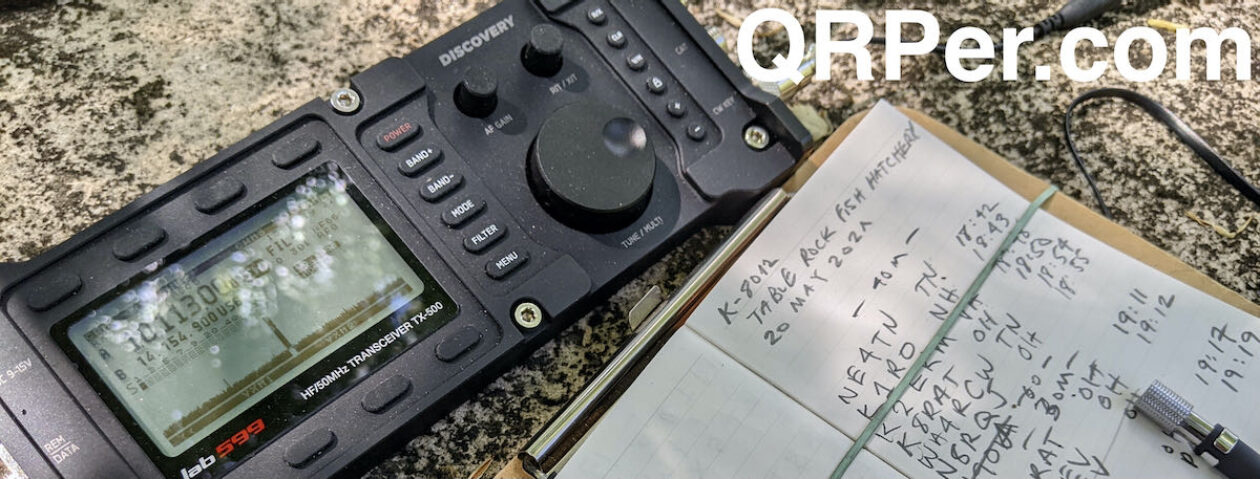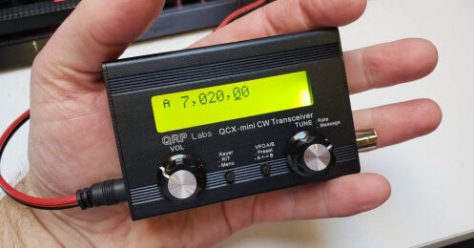On Sunday, November 29, 2020, I decided to return to one of my family’s favorite local POTA sites: the Zebulon B. Vance Birthplace.
On Field Day 2020, I activated this park and learned later that it was an ATNO (All-Time New One). It was very hard to believe because the site is nearly ideal for a POTA activation.
The Vance Birthplace is my go-to site when I want to do some field radio work without travelling too far and when the weather is marginal. The site has a wonderful large covered picnic area we typically have all to ourselves, and I can set up knowing that if it rains it won’t stop the activation.
When we arrived at the Vance Birthplace on Sunday, November 29, we were the only guests at the park. Even though the visitor’s center is closed on Sundays, the park is still open to the public.
Gear:
- Elecraft KX3
- Chameleon Emcomm III Portable random wire antenna
- CW Morse “Pocket Paddle”
- Heil Proset-K2 Boom Headset
- Red Oxx C-Ruck
- Hardened Power Systems QRP Ranger
- Ham Radio Workbench DC Distribution Panel
- Arborist throw line
On this particular activation, I decided to give my Elecraft KX3 some field time. I think this was its first field outing in several months. I decided to pair it with the Chameleon Emcomm III Portable antenna to make the most of multi-band operation. I knew in advance that this activation would also coincide with the CQ Worldwide CW contest and I wanted some frequency agility–the Emcomm III Portable covers 160-6 with a good ATU.
On the Air
After deploying the CHA Emcomm III Portable random wire antenna in a similar configuration as I have in the past (see image above), I tuned to 17M CW to avoid the contest crowd.

I worked a few stations but, frankly, it was slow going. For POTA, I’ve found that 18 meters isn’t the most productive band at this point in the solar cycle, but a number of other POTA ops were there too as they didn’t want to compete with blowtorch contest stations on 40 and 20 meters.
I eventually moved down to 30 meters and worked a few station as well.
I knew in advance I’d want to log some stations in SSB, so I brought the Heil Proset-K2 Boom Headset along for the ride. I can’t recommend this boom headset enough if you own an Elecraft KX3 or KX2. I believe great audio is the best way to maximize your QRP SSB signal and this headset is custom made for Elecraft gear and certainly delivers. It’s a major upgrade over the KX3 hand mic and, I believe, must add two S units to your signal.
Pileups!
Holy cow! I had no idea what would be awaiting me on 40 meters phone.
I spotted myself on the POTA network and my daughter, Geneva (K4TLI), moved in to log for me on my Microsoft Surface Go tablet.
In all of my field activations, I’ve never had the pileups I had that day. It sounded like proper DXpedition pileups. In order to make the most of it, I had to note three or four calls at a time and work them in succession.
Had this not been POTA, I think I would have moved to split operation to break apart the pileup and work it more efficiently. But in truth, POTA hunters/chasers are not used to thinking in terms of split. With only a handful of exceptions (for example, when I activated rare parks during the 2016 NPOTA program) I’ve never had a pileup so large I considered operating split at a park.
I did work stations about as quickly as I could but didn’t go into full “contest” mode where I give a quick signal report then move on to the next person.
Frankly, POTA and SOTA are not contests and part of the fun of it for me is the community and bonds that are formed between activators and hunters. It’s like meeting people at an on-air family reunion.
My SSB exchanges are never long-winded. I do maintain a certain cadence and keep POTA exchanges relatively brief because that’s just my operating style. I see this as a courtesy to the hunters who may have a limited opening to work my park and I want them to have ample opportunity to put me in the logs. I only spend a bit of time rag-chewing if the bands are a bit dead.
At the same time, I endeavor to make my exchanges friendly. I always try to take a few seconds to thank the operator at the other end of the ether and and wish them a good day.
Because, at the end of the day? POTA is not a contest.
But I digress…
It was amazing fun getting a bit of that pileup “rush”–!
Geneva was logging about as quickly as she could as she heard me reply to stations with their callsigns. I would like to have used the speaker on my KX3 so she could follow the pileup but one of the weak points of the KX3 is the mediocre audio from the internal speaker.
You might see me logging in the photos above because I was also keeping a paper log to cross-reference with the N3FJP generated logs later.
Tally
I worked a total of 90 stations in about one hour and five minutes on the air.
I made 10 CW contacts on 17 and 30 meters, and 80 SSB contacts on 40 meters.
Of course, it was SSB where I really racked up the contacts in short order: 80 stations in 47 minutes. Whew!
I’m certain I could have logged 150-200 stations if I had more than about an hour or so of on-air time. By the time I left the air, I did eliminate the pileup.
Here’s the QSO Map from my logs (click to enlarge):
 By the way: Geneva (K4TLI) is close to taking her General exam so you’ll soon be seeing her call on the POTA and SOTA spots page! I’m already piecing together components for her field pack! Of course, she’ll start by building her own resonant antennas! She can’t wait.
By the way: Geneva (K4TLI) is close to taking her General exam so you’ll soon be seeing her call on the POTA and SOTA spots page! I’m already piecing together components for her field pack! Of course, she’ll start by building her own resonant antennas! She can’t wait.






















 There are two designs: one with an on/off switch, and a newer version without an on/off switch that has auto power save. Both circuits are the same but the software for the PIC chip is different. If you build the one without the on/off switch there is a very specific sequence of connecting and disconnecting the device and it’s my opinion that the one with the on/off switch is the version that makes more sense to build. It shouldn’t matter which order you connect everything up and you simply throw the on/off switch to turn the device on and off.
There are two designs: one with an on/off switch, and a newer version without an on/off switch that has auto power save. Both circuits are the same but the software for the PIC chip is different. If you build the one without the on/off switch there is a very specific sequence of connecting and disconnecting the device and it’s my opinion that the one with the on/off switch is the version that makes more sense to build. It shouldn’t matter which order you connect everything up and you simply throw the on/off switch to turn the device on and off.








